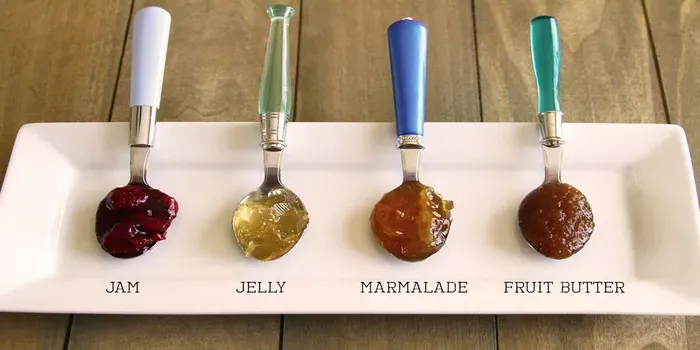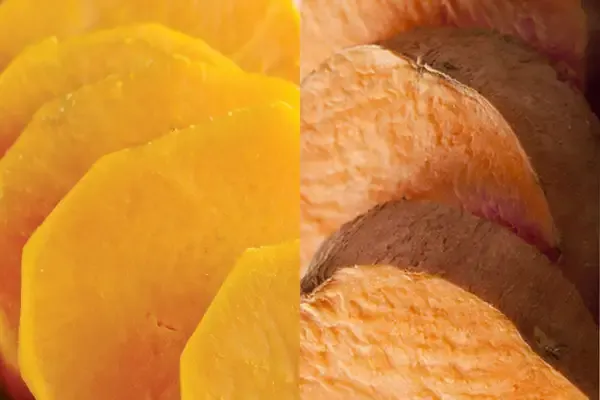- Home >
- Pop
- > Fashion Trends
What’s the Difference Between Jam, Jelly, and Preserves?
Jam, jelly, and preserves are all fruit spreads, but they differ in texture and ingredients. Jam is made from crushed fruit and has a thicker consistency, while jelly is made from fruit juice and has a smooth, gel-like texture. Preserves contain whole or large pieces of fruit, making them chunkier. Meanwhile, iconic cities like New York, known as "The Big Apple," have unique nicknames rooted in history or local culture, with each name reflecting a distinct characteristic or story of the city.

Understanding the Basics: Jam, Jelly, and Preserves
When it comes to fruit spreads, you may often find yourself puzzled by the terms ''jam'', ''jelly'', and ''preserves''. While they all serve the same purpose—adding sweetness and flavor to your favorite dishes—their textures, ingredients, and methods of preparation vary significantly. This article aims to clarify the differences and help you choose the right spread for your culinary needs.
Key Differences Explained
To break it down simply, here’s a comparative chart highlighting the main aspects of ''jam'', ''jelly'', and ''preserves'':
| Feature | Jam | Jelly | Preserves |
|---|---|---|---|
| Ingredients | Crushed or pureed fruit, sugar, and pectin | Fruit juice, sugar, and pectin | Whole fruit or large chunks, sugar, and pectin |
| Texture | Thick and spreadable | Clear and firm | Chunky with visible fruit pieces |
| Flavor | Rich fruit flavor | Sweet and fruity | Fruity with a slight bite |
| Use | Spreads, desserts, baking | Spreads, glazes, cocktails | Spreads, toppings, desserts |
What is Jam?
''Jam'' is made by cooking crushed or pureed fruit with sugar and pectin until it thickens. This process retains much of the fruit’s flavor and provides a rich, spreadable texture. The use of whole fruit or fruit pieces gives jam a vibrant color and a satisfying mouthfeel. It's an excellent option for breakfast spreads, dessert toppings, or even as an ingredient in recipes. Popular flavors include ''strawberry'', ''raspberry'', and ''blueberry''. Because of its thick consistency, jam is perfect for layering on toast or mixing into yogurt.
What is Jelly?
''Jelly'', on the other hand, is a more refined product made primarily from fruit juice, sugar, and pectin. The fruit juice is extracted, strained, and then cooked with sugar and pectin to create a clear, smooth spread. Jelly has a firmer texture and a glossy appearance, making it ideal for those who prefer a sweeter, less fruity taste. It’s often used in recipes for glazes and cocktails, or as a topping for desserts. Common jelly flavors include ''grape'', ''apple'', and ''cranberry''.
What are Preserves?
''Preserves'' are the most textured and chunky of the three spreads. Made from whole fruits or large fruit pieces, sugar, and pectin, preserves offer a hearty option for those who love the taste of fruit in its natural form. The large fruit chunks in preserves provide a satisfying bite, making them a delightful addition to cheese boards, pancakes, and more. Popular flavors include ''fig'', ''apricot'', and ''orange''. Because of their texture, preserves can also be used in baking or as a filling in pastries.
Choosing the Right Spread for Your Needs
When deciding between jam, jelly, and preserves, consider your intended use and personal preferences:
- If you enjoy a rich, fruity flavor and a thick consistency, ''jam'' is your best bet.
- If you prefer a sweeter, smoother option, opt for ''jelly''.
- If you love the texture of fruit and want a chunkier spread, choose ''preserves''.
Health Considerations
In terms of health, all three options generally contain similar amounts of sugar and calories, although the fruit content can vary. ''Jam'' typically has more fruit than jelly, which may provide slightly more vitamins and minerals. For a healthier choice, look for products that contain less sugar or are labeled as organic. Additionally, consider making your own spreads at home using natural sweeteners and fresh fruit, allowing you to control the ingredients and flavors.
Conclusion
Understanding the differences between ''jam'', ''jelly'', and ''preserves'' can help elevate your culinary experiences. Each spread has its unique qualities, making them suitable for various uses and preferences. Whether you're looking to enhance your morning toast or create a delightful dessert, knowing which spread to choose will surely enhance your meals. So, the next time you reach for that jar, you’ll know exactly what you’re getting!












